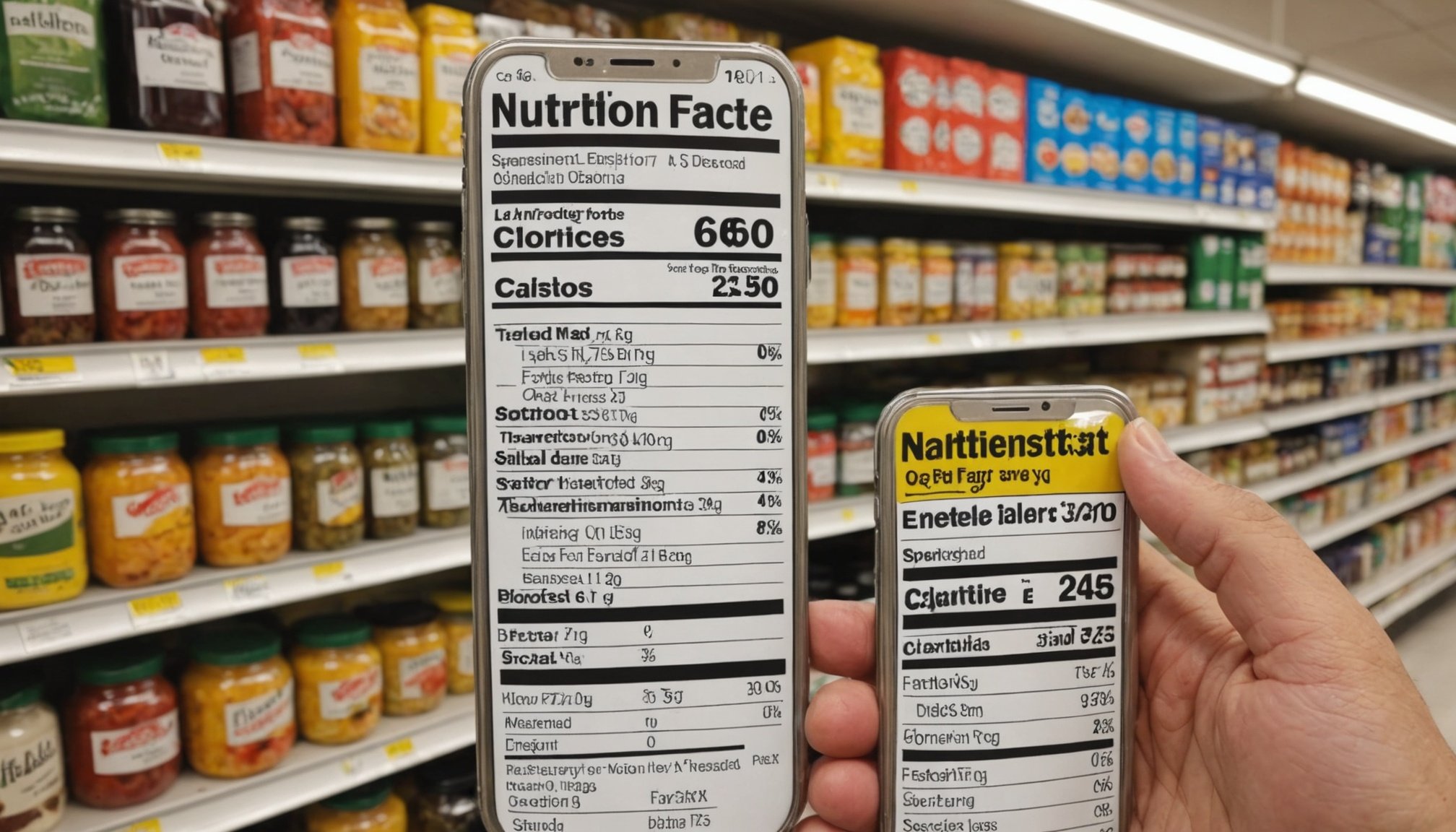In today’s world, making informed food choices can often feel like navigating through a complex maze. With the rise of health consciousness among consumers, understanding how to read nutrition labels is more important than ever. These labels provide essential information about the ingredients, nutrients, and overall quality of the products we consume. Whether you are trying to lose weight, maintain a balanced diet, or simply eat healthier, knowing how to interpret this information can empower you to make better decisions. In this article, we will explore the key components of nutrition labels and offer practical tips to help you choose the right foods for your health.
Understanding the Basics of Nutrition Labels
Nutrition labels are standardized formats that provide information about the nutrients found in food products. The first step in making informed choices is familiarizing yourself with the layout of these labels. Each label typically features a section called the Nutrition Facts which includes details about serving sizes, calories, and the percent daily values of various nutrients based on a 2,000-calorie diet.
This might interest you : How can understanding your body’s hunger cues improve your eating habits?
One fundamental concept to grasp is serving size. The serving size indicates how much of the product is considered one serving and is vital for understanding the calories and nutrients you will consume. Often, people underestimate the amount they eat, leading to unintentional overconsumption. For instance, a single serving of a snack may seem small, but many people consume multiple servings in one sitting.
Next, take note of the calories per serving, as this can help you manage your energy intake. If your goal is to maintain or lose weight, being aware of how many calories you consume in relation to your activity level is essential.
Also to see : How can you create a supportive environment at home to foster better eating habits?
The Nutrients section lists key components such as total fat, saturated fat, cholesterol, sodium, carbohydrates, fiber, sugars, and protein. Understanding these elements will guide you in selecting foods that support your health goals. For example, if you’re watching your heart health, you may want to limit saturated fat and sodium intake.
Finally, the bottom portion of the label shows vitamins and minerals that are significant for your overall health. These include vitamin D, calcium, iron, and potassium. Keeping an eye on these can help you ensure you are getting enough nutrients from your diet.
Deciphering Fats, Sugars, and Sodium
When reading nutrition labels, it’s crucial to pay special attention to the types of fats, sugars, and sodium listed. Understanding these components can significantly influence your dietary choices and health.
Fats are typically broken down into total fat, saturated fat, and trans fat. While fats are essential for your body, not all fats are created equal. Saturated fats and trans fats can increase the risk of heart disease when consumed in excess. Aim to choose foods with lower amounts of these fats. Instead, look for products that contain unsaturated fats, which can be beneficial when consumed in moderation.
Next, let’s discuss sugars. Nutrition labels differentiate between total sugars and added sugars. Total sugars include both naturally occurring sugars found in fruits and dairy and those added during processing. Added sugars, on the other hand, provide little nutritional value and contribute to higher calories without essential nutrients. Aim to limit added sugars in your diet, as they are linked to various health issues, including obesity and diabetes.
Sodium is another component to consider. High sodium intake can lead to elevated blood pressure and heart problems. The daily recommended limit for sodium is about 2,300 milligrams for most adults. When reading labels, look for foods that contain 5% or less sodium per serving, which is considered low, while 20% or more is high. By being mindful of these components, you can make better decisions about your food choices.
The Role of Fiber and Protein in Your Diet
Fiber and protein are two crucial elements listed on nutrition labels that can significantly impact your overall health. Understanding their roles in your diet will assist you in making more informed food choices.
Fiber is essential for maintaining a healthy digestive system. It helps to regulate bowel movements and can aid in controlling blood sugar levels. Additionally, a high-fiber diet is associated with lower risks of heart disease, type 2 diabetes, and certain cancers. Nutrition labels often indicate both soluble and insoluble fiber, but it’s generally recommended to focus on total fiber intake. Aim for foods that provide at least 3 grams of fiber per serving, as this can help keep you feeling full longer, which is beneficial for weight management.
Protein is another component that should not be overlooked. It plays a vital role in building and repairing tissues, producing enzymes, and supporting immune function. The amount of protein needed varies based on age, sex, and level of physical activity. A good rule of thumb is to aim for foods that provide about 10-30% of your total daily calories from protein sources. On labels, look for products with lean proteins and low saturated fat content. Incorporating adequate amounts of fiber and protein into your meals can enhance satiety, making you feel fuller for longer and reducing the likelihood of unhealthy snacking.
Incorporating high-fiber and high-protein foods into your diet can be beneficial for maintaining a balanced and nutritious diet. Take the time to compare various products and find those that align with your health goals.
Making Choices Based on Nutrition Labels
Once you have a good grasp of how to read nutrition labels, the next step is applying this knowledge to make healthier choices. This process can be transformative, allowing you to take control of your dietary habits.
Start by comparing similar products side by side. When you are at the grocery store, take a moment to read the labels of products that seem similar. One item might have significantly less sugar or more fiber than another. This comparison can lead you to choose the healthier alternative without compromising on taste.
Also, be mindful of marketing claims. Terms like “low fat,” “sugar-free,” or “organic” can be misleading. Always check the nutrition labels for a more comprehensive view of what you are consuming. Sometimes, products labeled as low fat may contain higher sugars to compensate for flavor loss, which could negate the health benefits you assume you are gaining.
Additionally, consider your dietary needs when making choices. If you are managing specific health conditions, such as diabetes or high blood pressure, tailor your selections to meet those needs. For example, choose products with lower sodium and sugar counts, and monitor your intake of calories and unhealthy fats.
Finally, educate yourself about serving sizes and portion control. It can be easy to consume more than a single serving, especially with snacks and beverages. Being conscious of portion sizes can help you maintain your health goals and avoid unnecessary calories.
By integrating these practices into your shopping habits, you can become more adept at selecting foods that nourish your body and support your health.
Navigating nutrition labels may initially seem daunting, but with a little practice, you can become skilled at selecting healthier foods for your diet. Understanding key terms related to fats, sugars, sodium, fiber, and protein will equip you with the knowledge to make informed decisions. By applying these principles in your shopping habits, you can take significant steps towards improving your overall health. Remember, the goal is not to eliminate all sugars or fats, but to choose products that provide a balance of nutrients while keeping your dietary goals in mind. By doing so, you empower yourself to foster a healthier relationship with food and nutrition.











